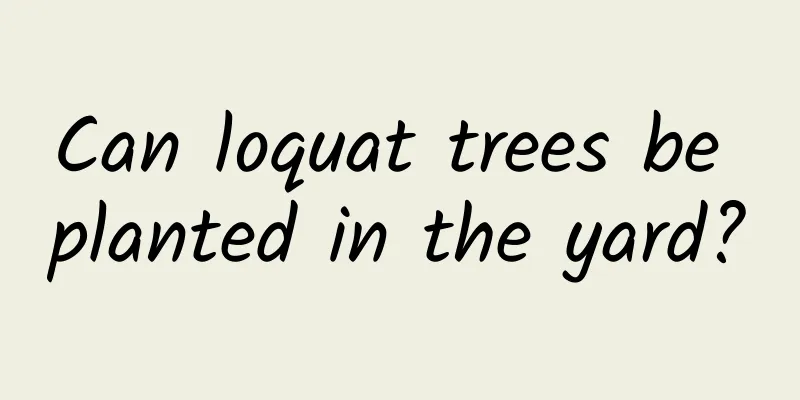Can orange peels be used to grow flowers in pots? (The benefits of using orange peels as fertilizer for growing flowers)

How to use orange peels to grow flowersThe leftover tangerine peels and orange peels can be used as flower fertilizer to grow flowers. Tangerine peels and orange peels contain nutrients such as nitrogen, phosphorus and potassium, and can be fermented with water. After decomposition, it can be turned into nutrients and absorbed and utilized by flowers and plants, providing nutrients for flowers and plants and promoting their growth. Moreover, the fermented peel water is acidic, which can improve soil alkalinity, increase soil permeability, prevent compaction, promote the growth of plant roots, and reduce the appearance of yellow leaves. The method of making fermented peel water is relatively simple and has no odor. Collect the orange peels and cut them into small pieces with a knife. Then, add about 10 times the amount of clean water, put them all into a large plastic bottle, fill it 70% to 80% full, and place it in a sunny place. It usually ferments for about a month and then it can be used to grow flowers. Orange peel water contains natural tangerine and grapefruit ingredients, so it has a fresh fragrance and no odor. When used, it can be diluted 20-50 times to allow flowers and plants to grow luxuriantly. Orange peel fermented peel water is acidic, which is more conducive to the growth of acid-loving plants, such as rhododendron, camellia, gardenia, jasmine and other flowers. It can reduce the appearance of yellow leaves, make the leaves of plants more dark green and shiny, and make the flowers bloom more luxuriantly. First, remove the odor when fermenting organic fertilizer:When I ferment organic fertilizer, I like to add a lot of orange peels to the fermented materials. The smell of orange peels can cover up many unpleasant odors. The organic fertilizer fermented with orange peels tastes sour but not very smelly. Collect a lot of rice water, cut the orange peel into pieces and put them into a plastic bottle. It will take about 15 to 20 days for natural fermentation. When fermenting solid organic fertilizer, covering it with orange peels can also effectively reduce the unpleasant smell. Second, use orange peels to repel bugs:Orange peel smells very fragrant, but everyone has eaten orange peel. Unprocessed fresh orange peel is very bitter and astringent. It tastes bitter and astringent to the point that your tongue becomes coated with fur. Crush the orange peel to extract the juice, then add some ash water. Spray it on the leaves of the plants. This can prevent many leaf-eating pests. The juice from orange peels can irritate wounds, and the wounds will immediately hurt once they are touched. The juice from orange peels can also effectively drive away ants or snails in flower pots. Third, improved soil acidity:Put the orange peels into a container with water after mashing them and leave them idle for about 10 days. Then pour them directly on the flower soil. The acidic fermented orange peel water can react chemically with many alkaline substances in the soil, which can balance the acidity and alkalinity of the soil. The fermented orange peel residue can be directly buried in the flower soil to provide nutrients for the growth of flowers. When improving the acidity of the soil, it is recommended not to ferment it for too long. Although it is effective, it is not as effective as fermenting it for too long. Adding rice washing water will have a better effect. 【 Summarize 】 Oranges are usually eaten in winter, while flowers and plants usually grow in early spring, which is their growth period. It is just right to use orange peels as flower fertilizer, and you don’t have to spend money to buy fertilizer. |
Recommend
How many times can sugarcane be planted in a year? When should sugarcane be planted?
How many seasons can sugarcane be planted in a ye...
The efficacy, effects and contraindications of melon wilt
1. Efficacy and Function 1. Stop bleeding: Grindi...
How many days does it take for ginger to sprout?
Ginger prefers a warm and humid environment, and ...
Strawberry Management Measures in January
The arrival of January also ushers in the coldest...
Can pregnant women eat pumpkin? Who can't eat pumpkin?
1. Can pregnant women eat it? Pregnant women can ...
Fortune Tree | Aquatic Plants Suitable for Living Rooms
Other Names Malabar Poppy Habits It likes high te...
How to grow red sandalwood
1. Breeding methods 1. Light: Dalbergia small-lea...
Cultivation methods and precautions of chestnut trees
1. Soil Chestnut trees are suitable for cultivati...
How to grow soybeans in small pots
1. Seed selection and germination Before planting...
Home lily vase flower arrangement
Flower Arrangement Material Needless to say, lily...
Don’t throw away the leftover durian seeds. Soak them in water and bury them in the soil to grow wildly.
But for someone who loves durian like Huahua, it ...
How to prune watermelon vines?
In the process of watermelon cultivation and mana...
What are the quick ways to color citrus fruits (the real way to quickly sweeten and color citrus fruits)
When citrus enters the fruit expansion period, in...
Cultivation Technology and Management of Salvia miltiorrhiza
Salvia miltiorrhiza belongs to the Lamiaceae fami...
One longevity cyclamen can produce 3,000 seeds, and a large number of seedlings will sprout when spread in the soil!
Cyclamen Cyclamen is easy to produce seeds. After...









